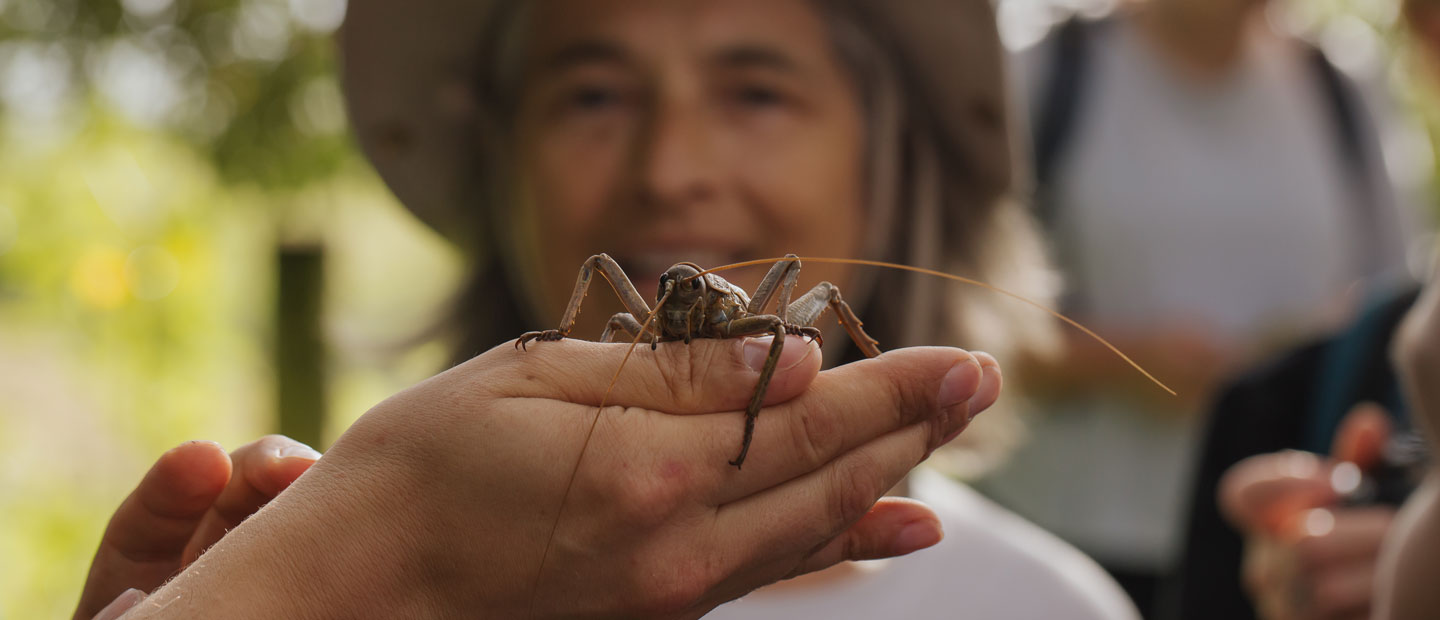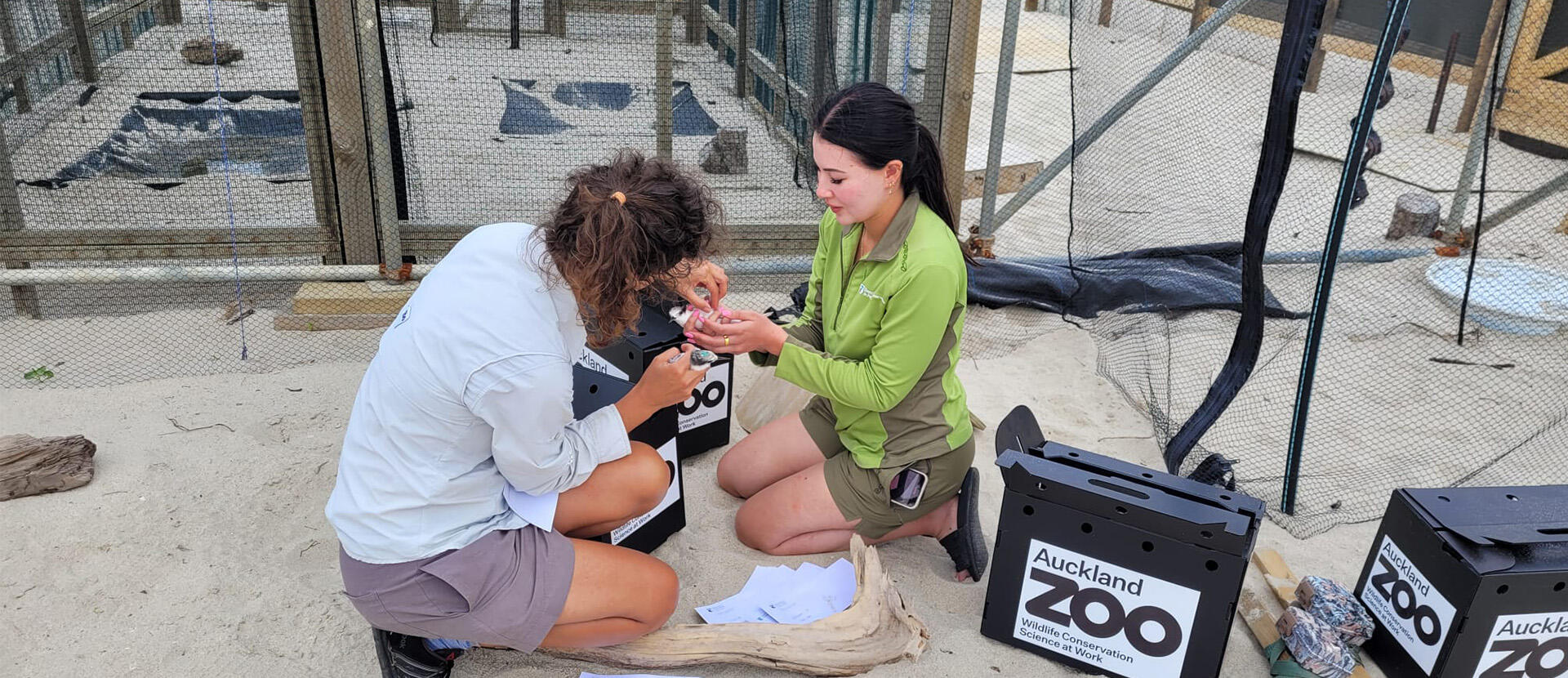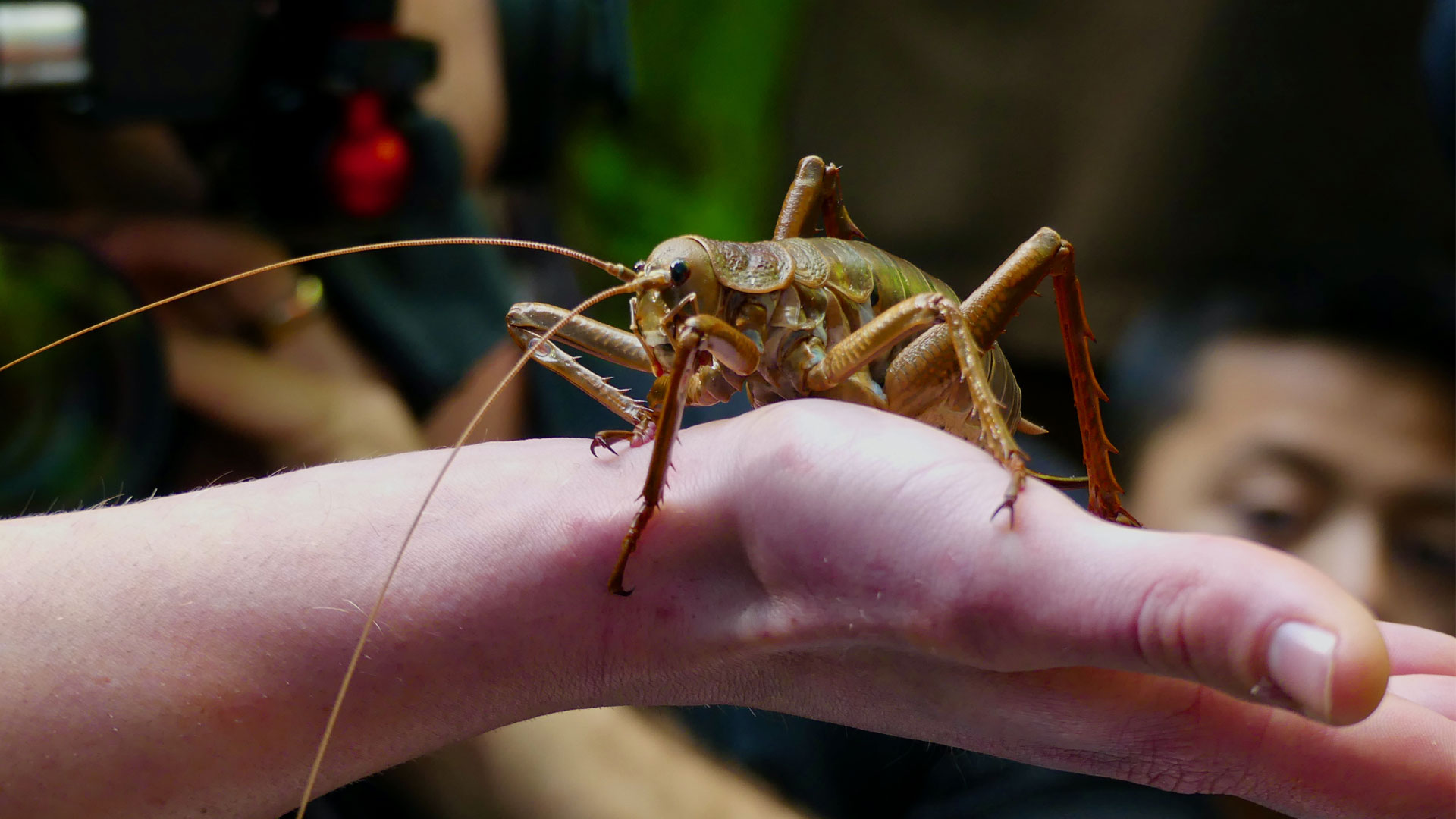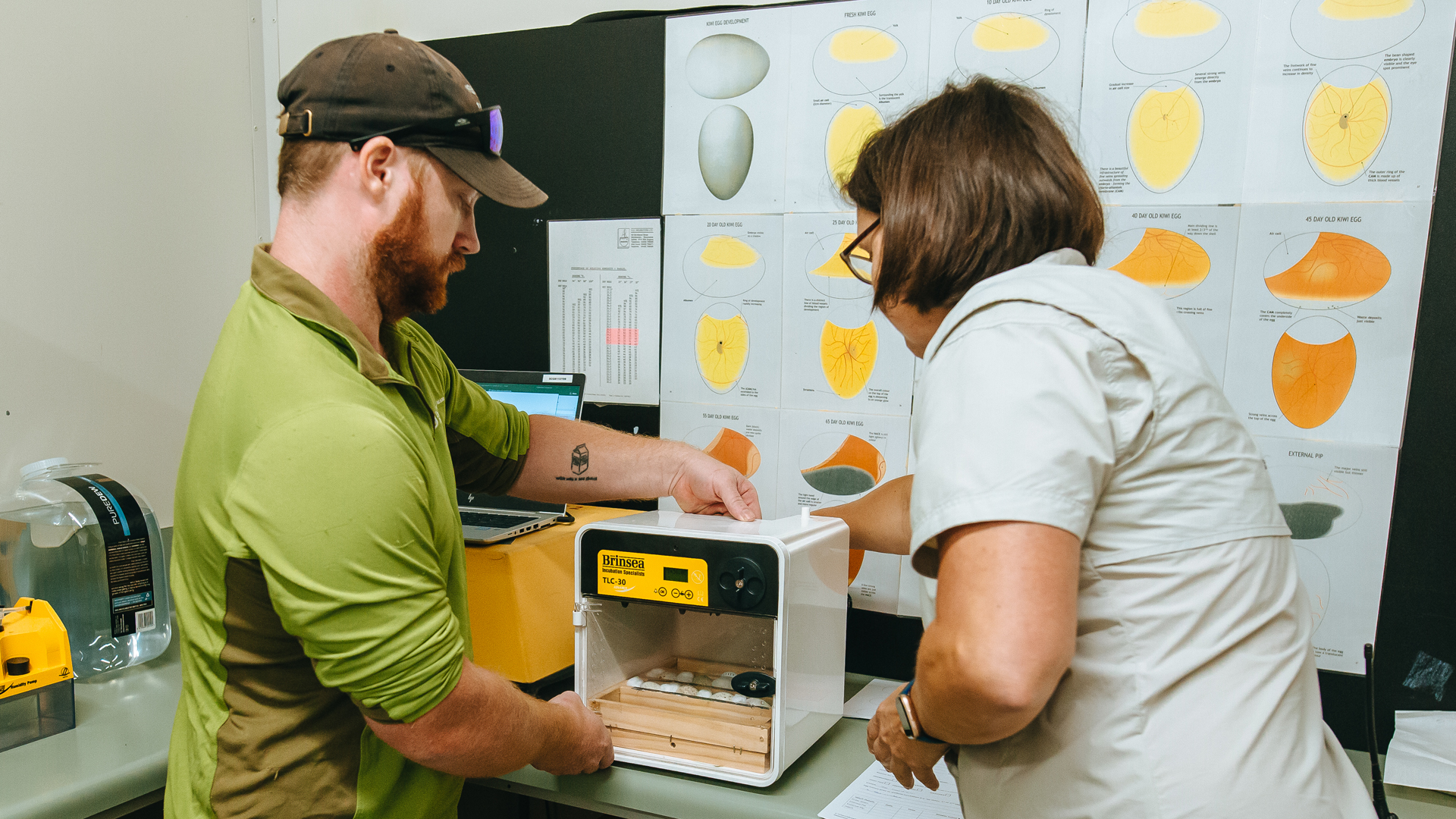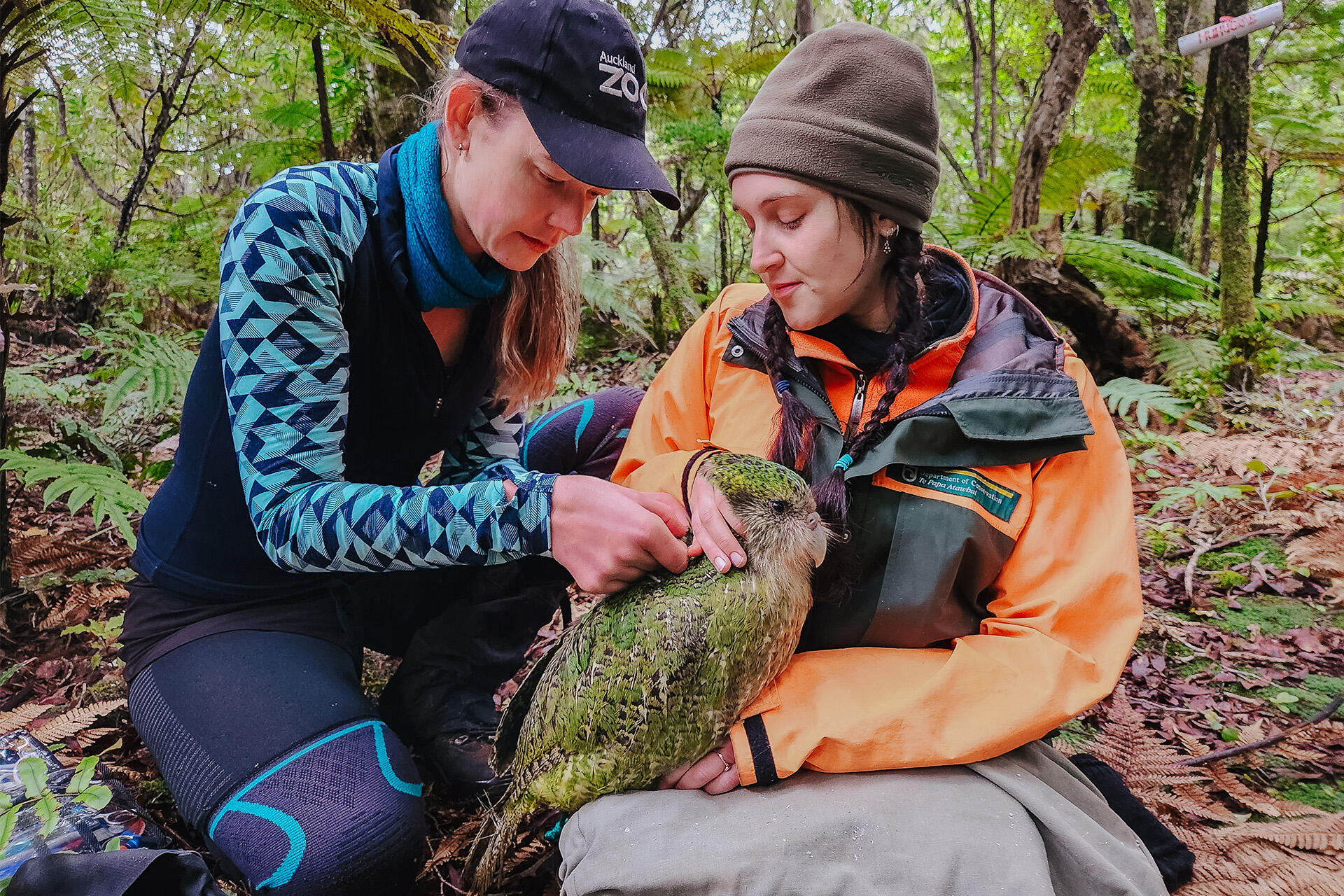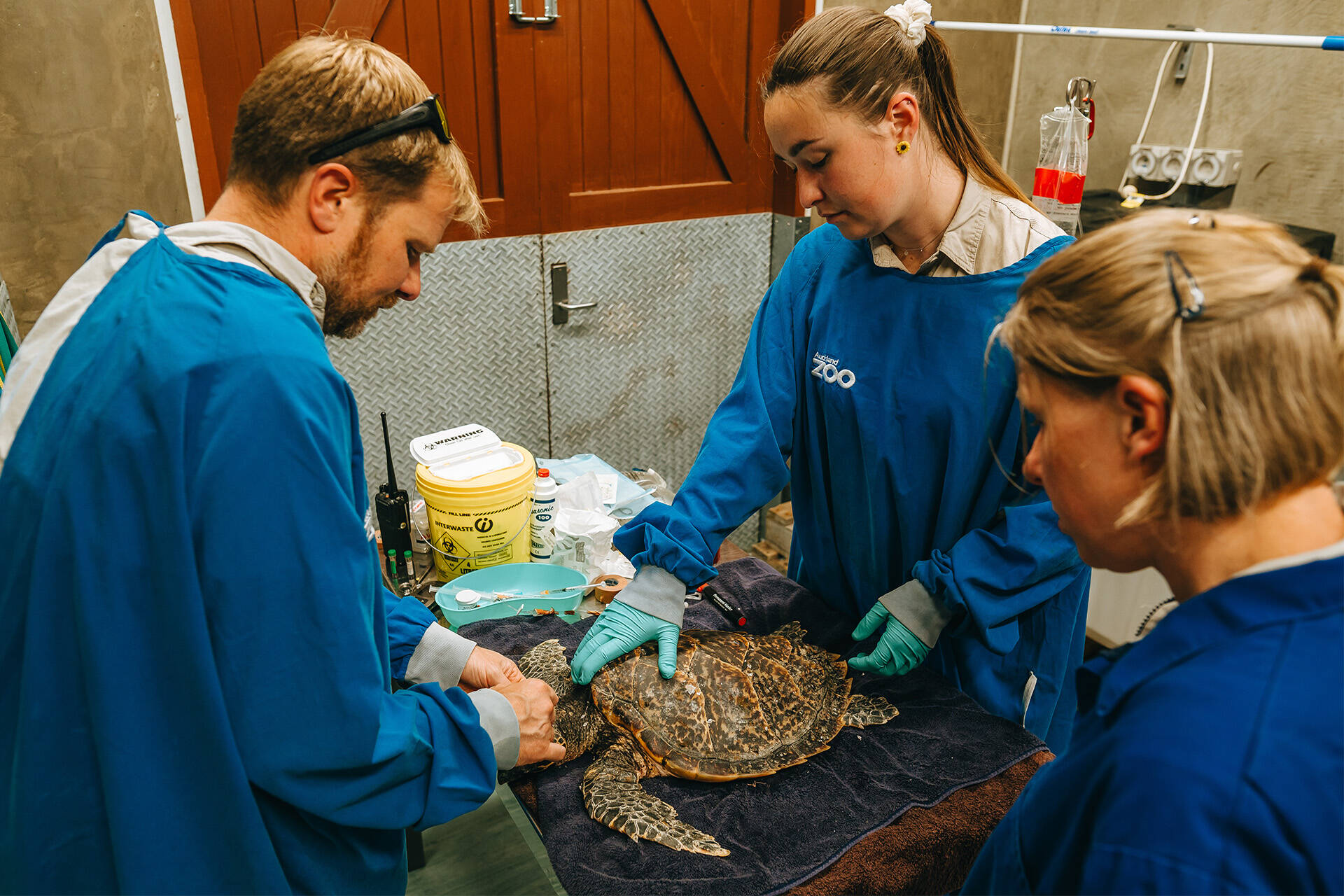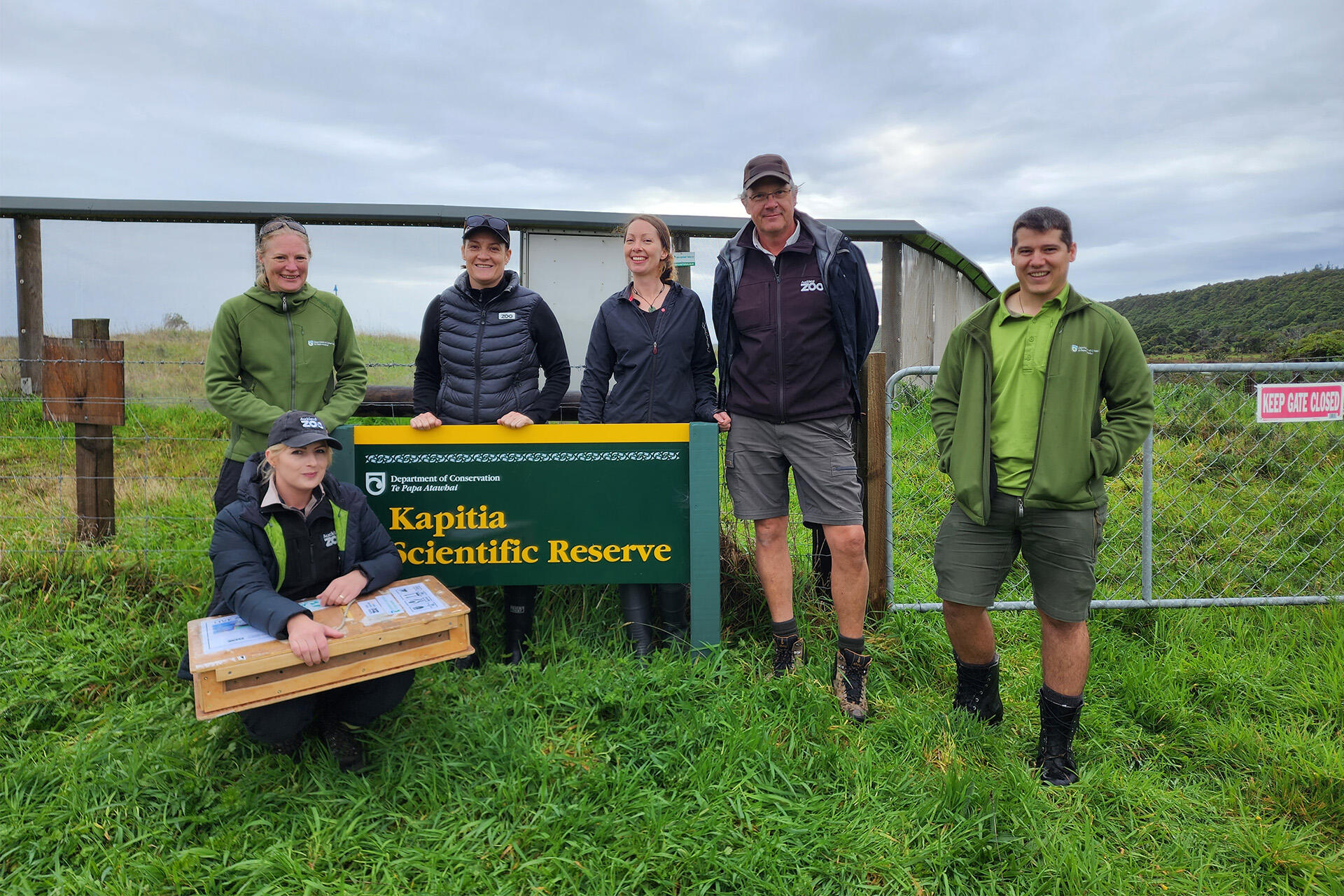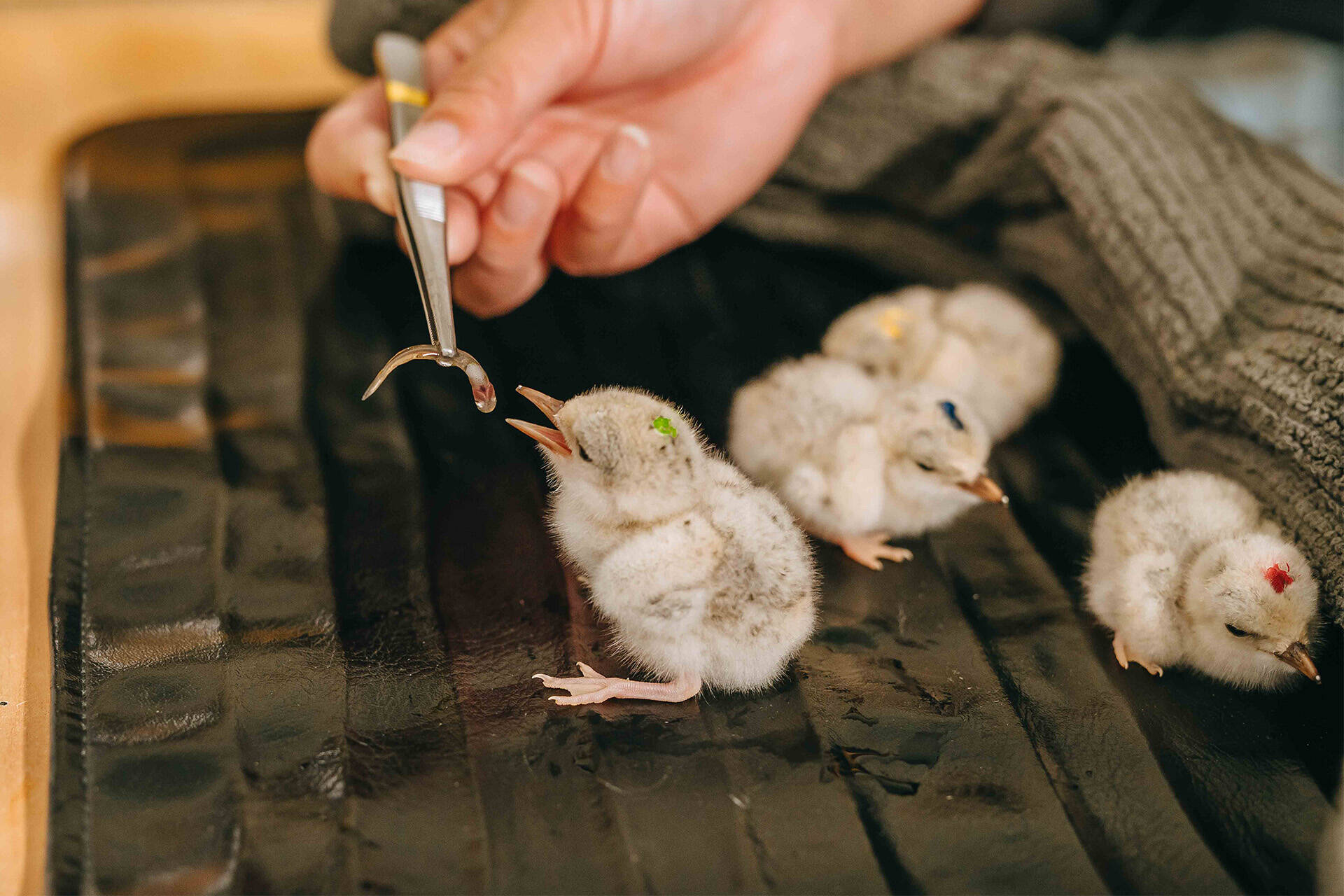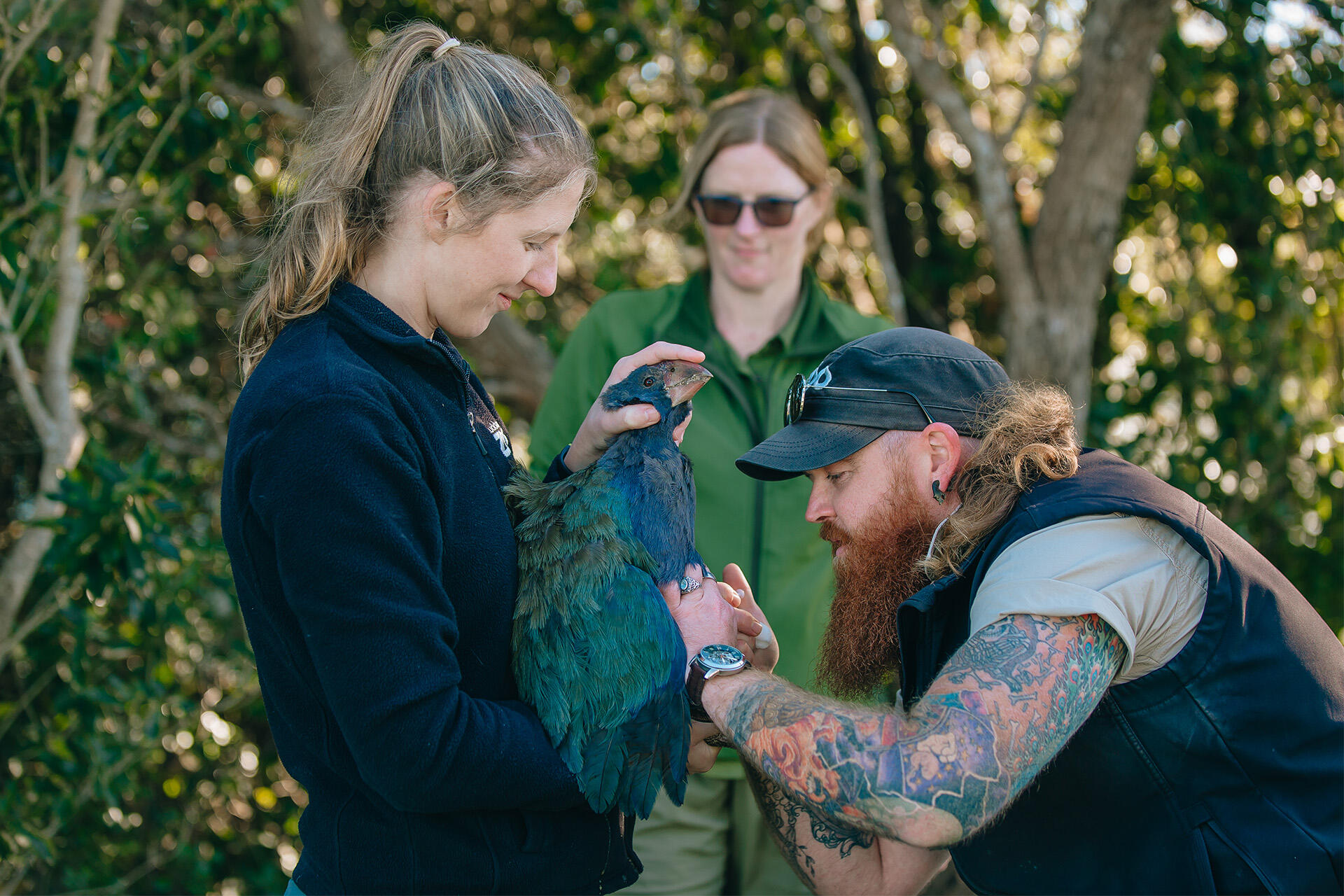For more than three decades, Auckland Zoo and DOC have collaborated on recovery programmes and fieldwork for some of our country’s most threatened bird, lizard, amphibian, and invertebrate species – from kākāpō, takahē, and tara iti, to pepeketua/Archey’s frog, kapitia and cobble skinks, and our largest giant wētā, the wētāpunga.
Wētāpunga were once holding on by a thread on a lone Hauraki Gulf island. But with DOC and iwi support, a phenomenally successful breeding programme led by the Zoo has seen the release of more than 7,000 of these unique taonga onto eight pest-free islands across the upper North Island – including islands managed by DOC and mana whenua. Now self-sustaining on four Hauraki Gulf islands, these efforts have led to a positive revision of the species’ threat status.
Auckland Zoo director Kevin Buley says so many of our native species remain dependent on human care to prevent their extinction.
“Ongoing interventions such as pest control, fenced reserves, breeding programmes, animal translocations and veterinary support are the reason for their survival."
“These kinds of intensive management skills are skills that Auckland Zoo, as a modern zoo and wildlife conservation science organisation, has been perfecting for decades. So, we’re hugely proud to be able to deploy them to compliment DOC’s knowledge and experience in recovery programmes for some of our most threatened invertebrate, reptile and bird species."


